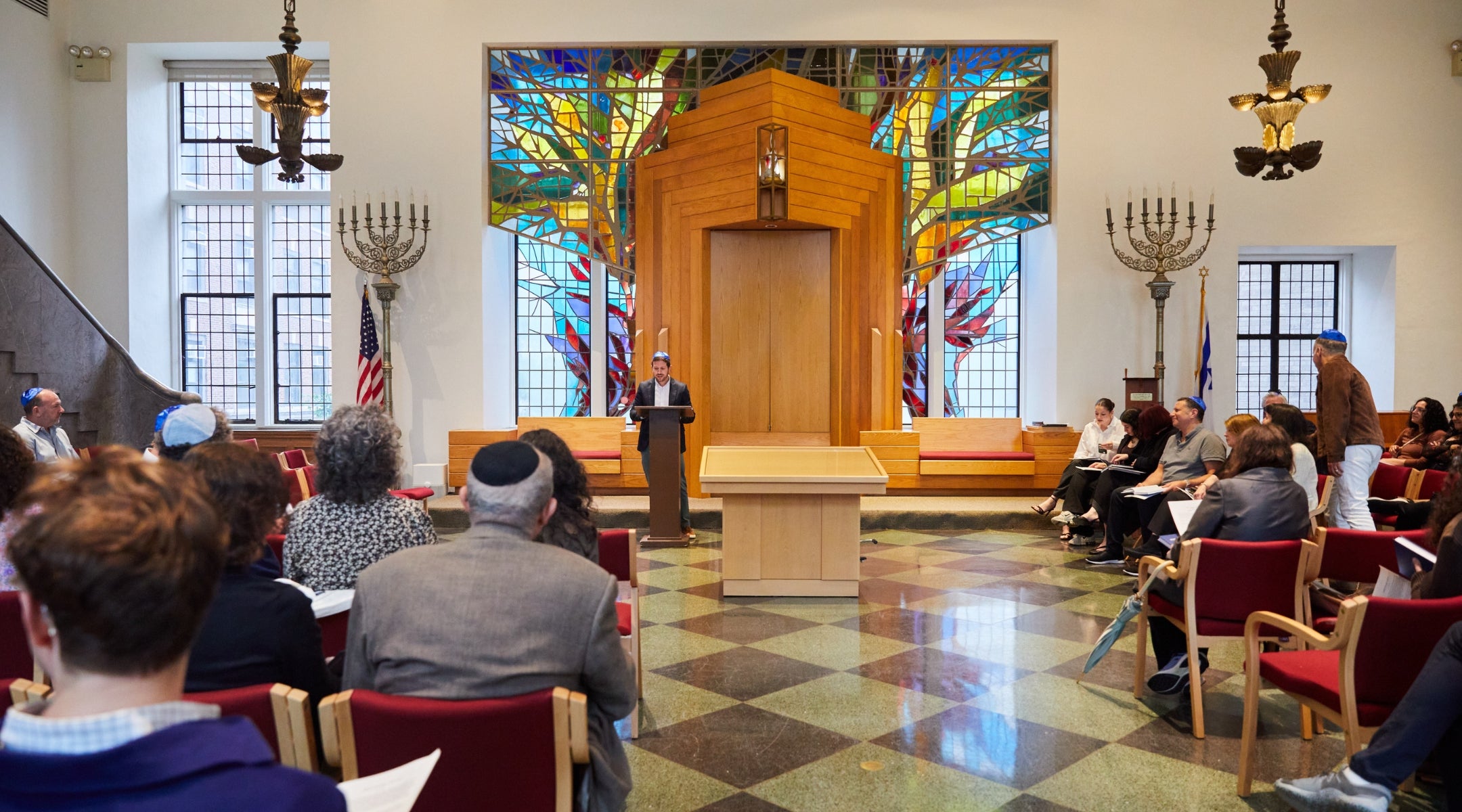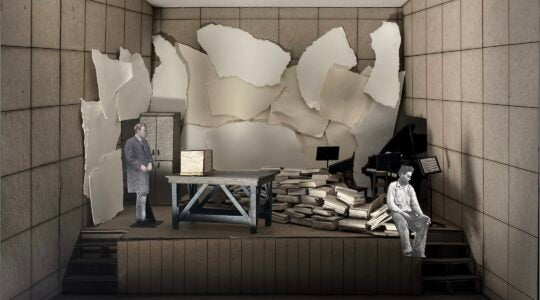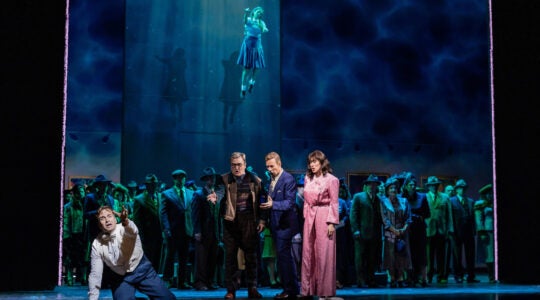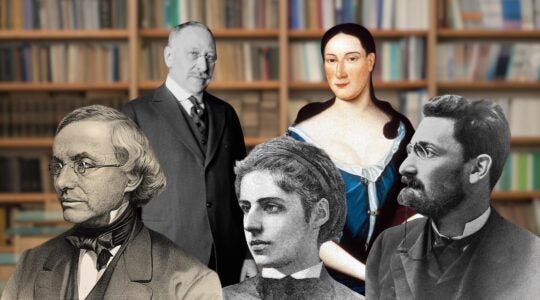When Galeet Dardashti leads Kol Nidre services this year, she’ll be drawing on the Persian musical liturgical custom of her family’s tradition. Her co-leader at this Yom Kippur evening service, Abe Safdie, will sing in the Syrian style.
And the roughly 150 people are expected to attend the service will be invited to share their own Jewish cultures’ versions of prayers — adding Iraqi, Moroccan and Yemenite traditions to the musical melange.
Welcome to Kanisse, an egalitarian Jewish community in New York built by and for Sephardic and Mizrahi Jews who believe their community deserves more expansive and inclusive options for prayer.
Since holding its first Yom Kippur service in 2021, Kanisse — the Arabic word for “synagogue” — has grown into an independent, year-round cultural and prayer community. It has a unique style that’s inclusive of multiple Sephardi and Mizrahi songs and customs and even its own Shabbat siddur, or prayer book, as well as a Yom Kippur prayer book.
This unique blend of Sephardic and Mizrahi traditions is the creation of Daniel Cayre, a 42-year-old Syrian Jew who grew up in Midwood, Brooklyn. During the depths of the pandemic in 2020, Cayre, who considers himself “ritualistic” and “community-oriented” and lives in the West Village, had hoped to find a Yom Kippur service to join online — though he knew it was unlikely he’d find a Sephardic one.
“Sephardic communities wouldn’t feel comfortable livestreaming,” Cayre said, referring to the Orthodox prohibition on using electricity on Shabbat and special holidays. “They’re typically observant.”
That was when Cayre began asking other Sephardic and Mizrahi Jewish friends whether they would be interested in participating in an egalitarian, Sephardic-style Yom Kippur service that was less bound by the rules of Orthodoxy. He envisioned a community where women could participate in all parts of the service, technology could be used for certain occasions — like livestreaming — and other stringencies, such as separate seating, would be relaxed.
It took a full year before Cayre’s vision came to fruition, but in 2021, more than 120 people attended Kanisse’s first-ever Kol Nidre service in person, and another 21 people joined online.
“Kanisse also became this space where, for the first time, we would have a multi-traditional service, where we have a Persian cantor alongside a Syrian cantor, with some community members that were Yemenite contributing to the same prayer,” said Cayre, the principal at a boutique real estate firm. “And I think that was very powerful and also showed the commonalities and the beautiful differences within the communities.”
Since that first service, Kanisse, which meets in different event spaces throughout downtown Manhattan, has built out a full calendar of events: In-person Shabbat services take place three times a year, and often see 80 to 100 people in attendance. They also host holiday events like Hanukkah candle lightings, North African Mimouna celebrations and Purim megillah readings.
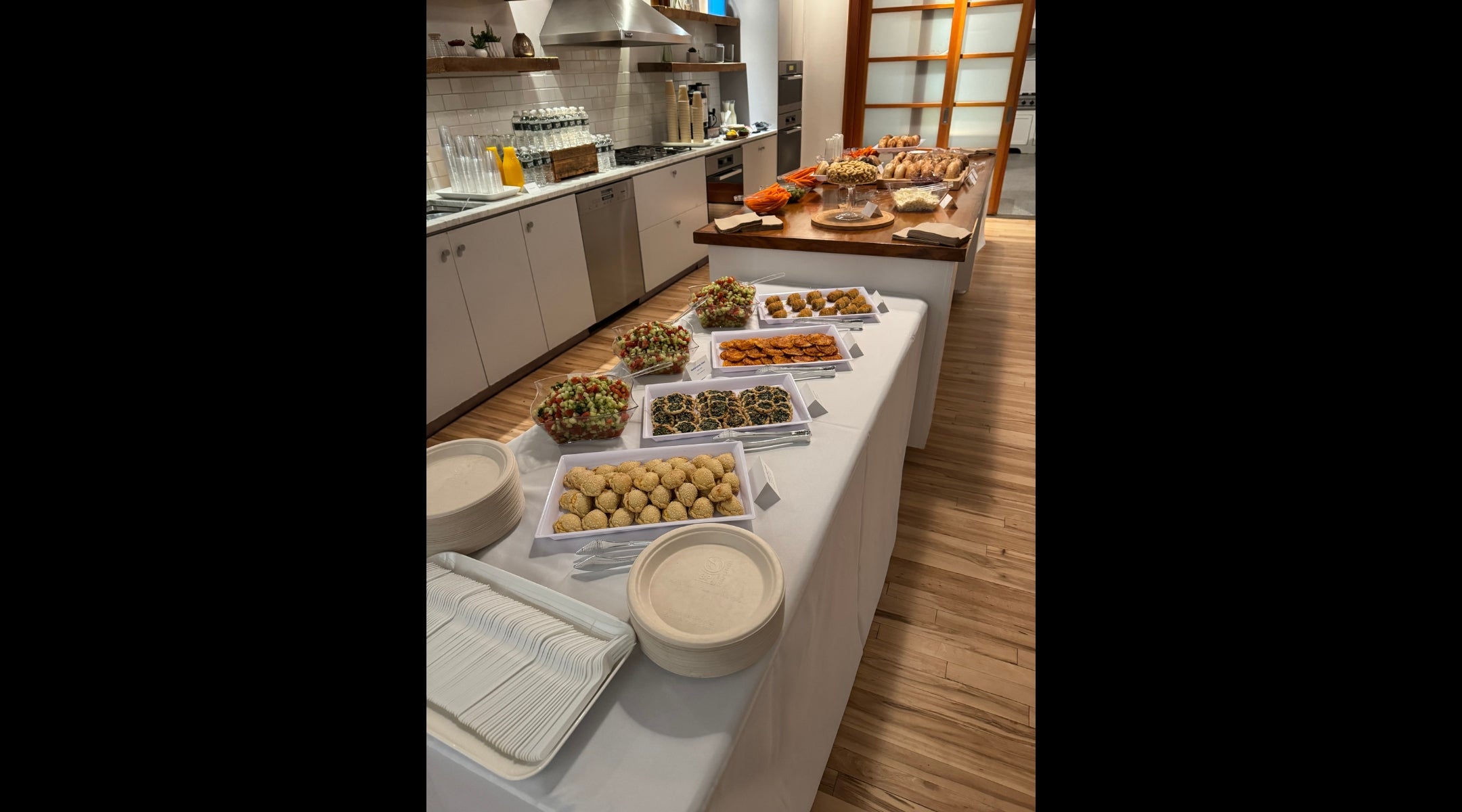
At Kanisse, Sephardic and Mizrahi heritage is front and center, including at Yom Kippur break fast, where Syrian foods are served. (Courtesy Daniel Cayre)
It’s not just women who are assuming central roles in a Sephardic congregation for the first time at Kanisse.
“A large portion of the community is from the LGBTQ community,” Cayre said. “We have many women who are leaders, both leading prayer but also taking part in the prayer and aliyah. So they’re going up to the Torah. We have interfaith families. We have Jews of color. We have Jews by choice, those that converted.”
For Jackie Anzaroot, who grew up in the Syrian community in Midwood, Kanisse has become an invaluable part of her religious practice.
“The traditional shul environment that I grew up in makes me feel kind of small, in the sense that I have to sit in a separate section and have to dress a specific way, and you can’t really participate fully,” she said.
Anzaroot, 35, grew up attending an Orthodox synagogue with her father. But in her late 20s, when she moved to the Bay Area, she began attending all kinds of new synagogues and prayer communities, including “traditional egalitarian” services, where men and women sat together, and women could read from and be called up to the Torah.
Those services were more Ashkenazi-oriented, and very different from the liturgy she grew up with. Anzaroot, who now lives in Fort Greene, Brooklyn, attends Kanisse services whenever they are offered.
“I just remember loving, when I went to Kanisse, being able to really fully show up as myself and be fully included in services,” she recalled. “I got an aliyah, which I’d never experienced before in my life. I got to participate in Birkat HaKohanim [the Priestly Blessing] because I am a kohenet [female member of the priestly class]. So for me, it was really meaningful to be able to participate in services and the religious liturgy as a full person, rather than having this kind of limited experience that I was used to.”
New York City is home to the largest Sephardic/Mizrahi population in the United States — between 375,000 and 591,000 people, according to a new report by NYU on Sephardi and Mizrahi Jews commissioned by JIMENA, an advocacy and education institution dedicated to raising awareness to Jewish refugees from Arab countries and Iran.
“When you’ve got one and a half million Jews, you have a lot more options,” said Matt Boxer, a professor at Brandeis University who researches American Jews, about the overall Jewish population in metropolitan New York. “You also have an easier time in creating new options, and that might be why you’re starting to see these new minyanim pop up.”
He added, “Places like New York, where there is a critical mass of the Sephardic and Mizrahi Jews — some of whom may not be as observant as perhaps their parents or their grandparents, but they still want a religious environment — this is the place where that sort of [less traditionally observant] environment is going to develop.”
As it happens, Kanisse is not the only egalitarian Sephardic community to appear in New York in recent years: The Egalitarian Sephardi Mizrahi Kehilla of NYC is a project of the progressive nonprofit activist group, Jews for Racial and Economic and Racial Justice and its Sephardi and Mizrahi Caucus, formed in 2014. It is also affiliated with anti-occupation group IfNotNow and Sephardic and Mizrahi affinity groups from anti-Zionist group Jewish Voice for Peace.
This year, the kehilla will be offering Rosh Hashanah and Yom Kippur services in the Moroccan tradition at the Urbane Arts Club (106 Beverley Road, Brooklyn). Led by singer and educator Laura Elkeslassy and Jewish Voice for Peace student rabbi Rinat Abastado.
A representative for the Egalitarian Sephardi Mizrahi Kehilla of NYC did not respond to multiple requests for comment.
“Because they’re affiliated with JFREJ they definitely have a political affiliation,” Cayre said, articulating the difference between that community and his own. “We try to cast a wide net. I would say, since Oct. 7, probably most of our attendees are pro-Israel. But we don’t draw any lines, we welcome everyone, just because we feel like there are so few options for egalitarian Sephardic practice that we want to pitch as wide a tent as possible.”
Looking ahead, Cayre said he aims to grow the community. He hopes that Kanisse can one day host regular Shabbat services, and maybe even have their own brick-and-mortar space. For now, Cayre’s own family is a major financial supporter of Kanisse.
“We’ve been trying to get funding from grants and other sources, but it’s been difficult,” he said.
The funding challenge will fade into the background come Oct. 1, when Yom Kippur begins and Dardashti leads Kol Nidre services for the third time.
“I just think it’s so incredible that this community has formed,” Dardashi said. “I’ve been waiting for this to happen for a long time.”
For Dardashti, leading services at Kanisse is an outgrowth of a deeply personal journey: Her father, Farid Dardashti, was a Conservative cantor — an unusual path for a Persian Jew in Los Angeles in the 1970s. As such, the High Holiday music she and her sisters grew up with was Ashkenazi, reflecting the background of most Conservative Jews.
To lead services for Kanisse, she taught herself the Persian High Holiday melodies by listening to recordings of her late grandfather, the famed Persian cantor Younes Dardashti, singing the Selichot service in Tehran in the 1950s and 1960s.
(Dardashti released an album, “Monajat,” in 2024, which mixes her own voice with vocal samples of the Selichot services from her late grandfather, and 70 Faces Media produced a podcast about her grandfather.)
“We’re doing our best to be as inclusive as we can while still keeping the traditional services intact,” Dardashti added. “We’re really trying to represent different communities.”
Get your tickets for in-person Yom Kippur services with Kanisse (873 Broadway, Suite #301) here from $36. Live stream access is free.
The New York Jewish Week brings you the stories behind the headlines, keeping you connected to Jewish life in New York. Help sustain the reporting you trust by donating today.
